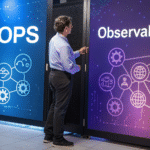Neuromorphic Chips And AI: Big Advances Coming 2025

Neuromorphic chips are bringing AI closer to human intelligence. These advanced processors mimic the brain, making artificial intelligence faster and more efficient. By 2025, breakthroughs will reshape industries, improve automation, and drive innovation. This article explains the benefits, real-world impact, and challenges of Neuromorphic Chips And AI.

Artificial intelligence is evolving rapidly. One of the most exciting developments is Neuromorphic Chips And AI. These chips copy how the brain works, helping AI process information more efficiently. By 2025, they will change industries, improve smart devices, and make AI more independent. Let’s explore why this technology matters and how it will benefit us all.
What Are Neuromorphic Chips?
Neuromorphic chips are processors designed to function like the human brain. Unlike traditional chips, they use brain-like networks to process information. This allows AI to learn, adapt, and respond in real time.
Why Are Neuromorphic Chips Important?
They are faster, more efficient, and require less power. As AI systems grow, these chips will play a key role in creating intelligent machines that think and act like humans.
Key Benefits of Neuromorphic Chips And AI
1. Faster Decision-Making
Neuromorphic chips help AI process data quickly. This improves everything from self-driving cars to financial transactions.
2. Energy Efficiency
These chips use less power than traditional processors. This makes them ideal for mobile devices, smart assistants, and large AI systems.
3. Human-Like Learning
AI powered by neuromorphic chips can learn from past experiences. The more data it processes, the smarter it becomes.
4. Better Healthcare Solutions
Neuromorphic AI can analyze medical images, detect diseases early, and suggest treatments. Doctors will have better tools for diagnosis and patient care.
5. Smarter Robotics
Robots powered by Neuromorphic Chips And AI will interact more naturally with people. This will improve automation in industries like manufacturing, healthcare, and customer service.
6. Advanced Cybersecurity
AI security systems using neuromorphic technology can detect threats faster and prevent cyberattacks before they happen.
7. Improved Voice Assistants
Smart assistants like Alexa and Siri will understand speech better, respond more naturally, and provide more useful answers.
8. Smarter Autonomous Vehicles
Self-driving cars will make quicker decisions, improving road safety and traffic efficiency.
9. Enhanced Financial Predictions
Neuromorphic AI can analyze market trends, predict financial risks, and improve investment strategies for businesses and individuals.
10. More Efficient Smart Cities
These chips can power intelligent traffic systems, energy management, and public safety networks, making cities more efficient and livable.
11. Improved Personalization in Technology
AI will provide highly personalized experiences in apps, e-commerce, and streaming services by learning user preferences in real-time.
12. Space Exploration Advancements
NASA and other space agencies can use neuromorphic AI to create smart rovers and satellites that analyze data without human intervention.
13. Education & Training Enhancement
AI-powered tutors and virtual classrooms will adapt to students’ learning styles, improving education accessibility worldwide.
Challenges of Neuromorphic Chips And AI
While this technology offers many benefits, there are challenges too.
Pros:
✔ Faster and smarter AI
✔ Energy-efficient technology
✔ Better decision-making
✔ Safer and more advanced automation
✔ Improved problem-solving
✔ Better healthcare and diagnostics
✔ Enhanced cybersecurity and fraud detection
✔ Personalized AI experiences
Cons:
✖ Expensive to develop
✖ Hard to integrate with existing AI systems
✖ Ethical concerns about AI decision-making
✖ Potential for job displacement
✖ Privacy and security concerns
✖ Possible misuse in surveillance and control
The Future of Neuromorphic Chips And AI
By 2025, neuromorphic chips will be more advanced, helping AI work smarter and faster. Industries will rely on AI for automation, decision-making, and customer interaction. As research continues, these chips will become more affordable and accessible, making AI a bigger part of everyday life.
In the next few years, we can expect:
- AI-powered customer service that understands emotions and context.
- Brain-computer interfaces that improve human-machine communication.
- Smarter AI companions that assist in mental health therapy.
- AI-powered innovations in environmental conservation and climate prediction.
- Integration of neuromorphic chips into household appliances for smarter homes.

Frequently Asked Questions
1. What makes neuromorphic chips different from regular processors?
Neuromorphic chips work like the human brain, while regular processors follow set instructions. This makes AI smarter and faster.
2. How will neuromorphic chips change healthcare?
They will help doctors diagnose diseases faster and create better treatment plans using AI-powered analysis.
3. Are neuromorphic chips safe?
Yes, but AI experts are working to ensure ethical and secure usage.
4. Will neuromorphic chips replace traditional computers?
Not immediately, but they will improve AI systems in many industries.
5. What industries will benefit the most?
Healthcare, robotics, finance, cybersecurity, and transportation will see the biggest impact.
6. How do neuromorphic chips help AI assistants?
They improve voice recognition, making smart assistants more accurate and conversational.
7. Where can I find more updates on this technology?
Follow AI research news, tech blogs, and industry reports for the latest advancements.
8. Can neuromorphic chips be used in education?
Yes, they will improve online learning, personalize student experiences, and enhance AI-powered tutoring.
9. How will neuromorphic AI impact businesses?
Businesses will see smarter automation, better customer service, and improved financial predictions.
10. What are the ethical concerns of neuromorphic AI?
Some concerns include privacy risks, job displacement, and the potential for AI misuse in surveillance or decision-making.
Conclusion
Neuromorphic Chips And AI are transforming artificial intelligence. By 2025, AI will be faster, smarter, and more efficient. Industries will see major improvements, from healthcare to security. Neuromorphic technology will create smarter robots, better decision-making systems, and more personalized AI experiences. While challenges exist, the future of AI looks promising. Stay informed and embrace the next big leap in technology!



